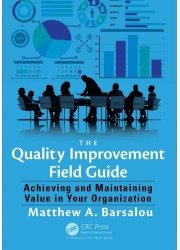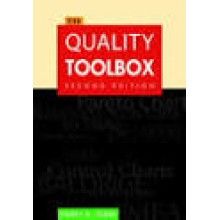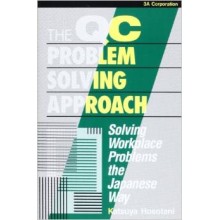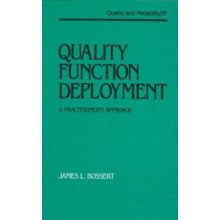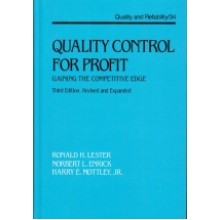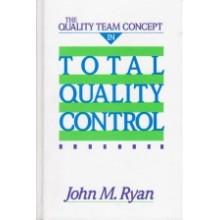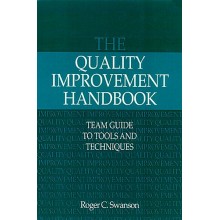The Quality Improvement Field Guide: Achieving and Maintaining Value in Your Organization
ISBN: 9781498745741
Author: Matthew A. Barsalou
Dispatch Time: 15 - 30 Days
Quantity:
-
Add to Compare
The Quality Improvement Field Guide: Achieving and Maintaining Value in Your Organization covers the key aspects that quality professionals must know to attain mastery in their field. After reading this book, readers will not only gain an understanding of the key quality improvement concepts, but will gain the practical insight required to implement them correctly.
The book starts with a brief history of quality and quality management, including the necessary quality documents. It describes key quality standards, including ISO 9001:2008, the upcoming ISO 9001:2015, and ISO 9004:2008. Next, it explores quality deployment concepts such as capturing the voice of the customer, the Kano model, quality function deployment, and quality policy deployment. SMART goals, SWOT analysis, and key process indicators are also addressed.
The book covers the seven classic quality tools: flowchart, Ishikawa diagram, Pareto diagram, scatter diagram, histogram, check sheet, and run chart. It also identifies the seven new management and planning tools: affinity diagram, tree diagram, process decision program chart, matrix diagram, prioritization matrix, interrelationship digraph, and activity network diagram.
Presenting methods for failure prevention and detection, the text explores measurement system analysis, gage repeatability and reproducibility studies, and the basics of maintaining a calibration system. It examines the various aspects of continuous quality improvement, complaints management, and the use of 8D reports for reporting on failures.
The book describes the four types of measurement scales and various measuring devices a quality professional may encounter and also contains a glossary that explains the basic quality-related terminology. Describing each quality method with sufficient detail so that readers can immediately apply them, this book is an ideal guide for anyone new to the field of quality as well as experienced quality professionals who need a quick overview.
Table of Contents
An Introduction to Quality
History of Quality
Positions within Quality
Quality Management
Quality Management Documents
Audits
Training
Quality Standards
Quality Deployment
Voice of the Customer
Kano Model
Quality Function Deployment
Quality Policy Deployment
Key Process Indicators
Quality Tools
Classic Seven Quality Tools
Seven New Management and Planning Tools
Failure Prevention and Detection
Failure Mode and Effects Analysis
Control Plan
Production Part Approval Process
Advanced Product Quality Planning
Measurement System Analysis
Gage Repeatability and Reproducibility
Calibration
Statistics for Quality Control
Statistical Process Control
Process Capability and Process Performance
Continuous Quality Improvement
Kaizen
Plan-Do-Check-Act
Root Cause Analysis
Employee Suggestion Program
Poka-Yoke
Lean
Seven Types of Waste
Five-S
Six Sigma
Belts and Positions in Six Sigma
Complaints Management
8D Report
Customer Complaints
Supplier Complaints
Measuring Devices
References
Glossary
Index
Write a review
Your Name:Your Review: Note: HTML is not translated!
Rating: Bad Good
Enter the code in the box below:
Copyright © 2014 Engineering Standards Bureau. All Rights Reserved.
Developed By Zoom Into Web


